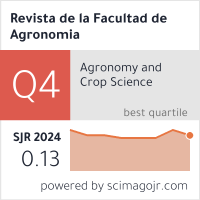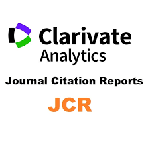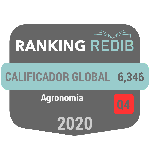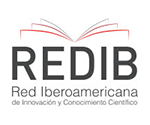Cultivares de uva locales en Egipto: explorando sus posibles beneficios para la salud
Resumen
Las actividades biológicas de los compuestos fitoquímicos presentes en la uva han atraído recientemente una creciente atención debido a sus posibles beneficios para la salud humana. En este estudio, se investigaron siete cultivares locales de uva de Egipto (Gharibi, Fayoumi, Bez El-Naka, Romy Ahmer, Edkawy, Matrouh Eswid y Baltim Eswid) para determinar su composición fitoquímica y sus actividades antioxidantes y antimicrobianas. Se midieron los taninos, fenoles totales, flavonoides totales y resveratrol en la pulpa de uva y el extracto de semilla. Se utilizaron ensayos de eliminación de radicales 2,2-difenil-1-picrilhidrazilo (DPPH) y de potencia antioxidante reductora férrica (FRAP) para determinar el nivel de actividad antioxidante. Los compuestos polifenólicos se identificaron mediante cromatografía líquida-espectrometría de masas en tándem (LC-MS/MS). Los resultados revelaron que los cultivares Edkawy y Baltim Eswid presentaron el mayor contenido de taninos en las semillas (0,68 y 0,65 %, respectivamente) y de flavonoides totales en la pulpa y las semillas (0,06 y 0,08 %, respectivamente). Baltim Eswid presentó el mayor contenido de fenoles totales (0,11 %) en la pulpa. La capacidad antioxidante general de los extractos de semilla de uva fue extremadamente superior a la de la pulpa, siendo Baltim Eswid el mejor en este aspecto. Los valores máximos de resveratrol para la pulpa y la semilla (46,24 y 307,12 mg.100 g⁻¹, respectivamente), se observaron en Baltim Eswid. Los principales compuestos presentes en el extracto de semilla fueron las catequinas, con concentraciones que oscilaron entre el 26,51 % en Fayoumi y el 35,8 % en Bez El-Naka. El estudio demostró que el extracto de semilla de uva tiene propiedades antimicrobianas con potencial aplicación como agente antimicrobiano en el área industrial y como tratamiento alternativo en el sector médico.
Descargas
Citas
Ahmed, O.A., & Abd EL-Aziz, M.H. (2021). Description and evaluation of some newly introduced grape cultivars under Egyptian conditions. Journal of Agricultural Chemistry and Biotechnology, Mansoura University, 12(7), 127-136. https://dx.doi.org/10.21608/jacb.2021.187453
Atanassova, M., & Christova-Bagdassarian, V. (2009). Determination of tannins content by titrimetric method for comparison of different plant species. Journal of the University of Chemical Technology and Metallurgy, 44(4), 413-415. https://journal.uctm.edu/node/j2009-4/14_Maria_Atanasova_413-416.pdf
Balouiri, M., Sadiki, M., & Ibnsouda, S.K. (2016). Methods for in vitro evaluating antimicrobial activity: A review. Journal of Pharmaceutical Analysis, 6(2), 71-79. https://doi.org/10.1016/j.jpha.2015.11.005
Baydar, N.G., Sagdic, O., Ozkan, G., & Cetin, S. (2006). Determination of antibacterial effects and total phenolic contents of grape (Vitis vinifera L.) seed extracts. International Journal of Food Science and Technology, 41(7), 799-804. https://doi.org/10.1111/j.1365-2621.2005.01095.x
Blois, M.S. (1958). Antioxidant determinations by the use of a stable free radical. Nature, 181, 1199-1200. https://doi.org/10.1038/1811199a0
Caturla, N., Vera-Samper, E., Villalaín, J., Mateo, C.R., & Micol, V. (2003). The relationship between the antioxidant and the antibacterial properties of galloylated catechins and the structure of phospholipid model membranes. Free Radical Biology and Medicine, 34(6), 648-662. https://doi.org/10.1016/s0891-5849(02)01366-7
Clinical and Laboratory Standards Institute (CLSI). (2008). Performance Standards for Antimicrobial Disk and Dilution Susceptibility Tests for Bacteria Isolated from Animals: Approved Standard. Wayne, PA.: Clinical and Laboratory Standards Institute.
Elejalde, E., Villarán, M.C., Esquivel, A., & Alonso R.M. (2024). Bioaccessibility and antioxidant capacity of grape seed and grape skin phenolic compounds after simulated in vitro gastrointestinal digestion. Plant Foods for Human Nutrition, 79(2), 432-439. https://doi.org/10.1007/s11130-024-01164-z
Gaser, A.S.A., Abo El-Wafa, T.S.A., & Farag, A.R.A. (2023). Evaluation and morphological characteristics of some newly–introduce grape cultivars under Egyptian environmental conditions. Horticulture Research Journal, 1(1),121-137. https://doi.org/10.21608/hrj.2023.306954
Gómez, A.M., López, C.P., & de la Ossa, E.M. (1996). Recovery of grape seed oil by liquid and supercritical carbon dioxide extraction: a comparison with conventional solvent extraction. The Chemical Engineering Journal and the Biochemical Engineering Journal, 61(3), 227-231. https://doi.org/10.1016/0923-0467(95)03040-9
Jaitz, L., Siegl, K., Eder, R., Rak, G., Abranko, L., Koellensperger, G., & Hann, S. (2010). LC–MS/MS analysis of phenols for classification of red wine according to geographic origin, grape variety and vintage. Food Chemistry, 122(1), 366–372. https://doi.org/10.1016/j.foodchem.2010.02.053
Karageçili, H., İzol, E., Kireçci, E., & Gülçin, İ. (2023). Antioxidant, antidiabetic, antiglaucoma, and anticholinergic effects of Tayfi grape (Vitis vinifera): A phytochemical screening by LC-MS/MS analysis. Open Chemistry, 21(1), 20230120. https://doi.org/10.1515/chem-2023-0120
Karuppusamy, S., & Rajasekaran, K.M. (2009). High throughput antibacterial screening of plant extracts by Resazurin redox with special reference to medicinal plants of Western Ghats. Global Journal of Pharmacology, 3(2), 63-68. https://www.idosi.org/gjp/3(2)09/2.pdf
Martin, M.E., Grao-Cruces, E., Millan-Linares, M.C., & Montserrat-de la Paz, S. (2020). Grape (Vitis vinifera L.) seed oil: A functional food from the winemaking industry. Foods, 9(10), 1360. https://doi.org/10.3390/foods9101360
McDonald, S., Prenzler, P.D., Antolovich, M., & Robards, K. (2001). Phenolic content and antioxidant activity of olive extracts. Food Chemistry, 73(1), 73-84. https://doi.org/10.1016/s0308-8146(00)00288-0
Mohammadparast, B., Rasouli, M., & Eyni, M. (2024). Resveratrol contents of 27 grape cultivars. Applied Fruit Science, 66, 1053-1060. https://doi.org/10.1007/s10341-024-01060-5
Nour, V., Trandafir, I., & Muntean, C. (2012). Ultraviolet irradiation of trans-resveratrol and HPLC determination of trans-resveratrol and cis-resveratrol in Romanian red wines. Journal of Chromatographic Science, 50(10) 920-927, https://doi.org/10.1093/chromsci/bms091
Pająk, P., Socha, R., Gałkowska, D., Roznowski, J., & Fortuna, T. (2014). Phenolic profile and antioxidant activity in selected seeds and sprouts. Food Chemistry, 143, 300-306. https://doi.org/10.1016/j.foodchem.2013.07.064
Paredes-López, O., Cervantes-Ceja, M.L., Vigna-Pérez, M., & Hernández-Pérez, T. (2010). Berries: Improving Human Health and Healthy Aging, and Promoting Quality Life-A Review. Plant Foods for Human Nutrition, 65(3), 299-308. https://doi.org/10.1007/s11130-010-0177-1
Perrone, D., Fuggetta, M.P., Ardito, F., Cottarelli, A., De Filippis, A., Ravagnan, G., De Maria, S., & Lo Muzio, L. (2017). Resveratrol (3,5,4'-trihydroxystilbene) and its properties in oral diseases. Experimental and Therapeutic Medicine, 14(1), 3-9. https://doi.org/10.3892/etm.2017.4472
Prestinaci, F., Pezzotti, P., & Pantosti, A. (2015). Antimicrobial resistance: a global multifaceted phenomenon. Pathogens and Global Health, 109(7): 309–318. https://doi.org/10.1179/2047773215Y.0000000030
Quisumbing, E. (1978). Medicinal Plants of the Phillippines. India: Katha Publishing Co. Inc.
Rababah, T.M., Hettiarachchy, N.S., & Horax, R. (2004). Total phenolics and antioxidant activities of fenugreek, green tea, black tea, grape seed, ginger, rosemary, gotu kola, and ginkgo extracts, vitamin E, and tert-butylhydroquinone. Journal of Agricultural and Food Chemistry, 52(16), 5183-5186. https://doi.org/10.1021/jf049645z
Ranjitha, C.Y., Priyanka, S., Deepika, R., Smitha Rani, G.P., Sahana, J., & Prashith Kekuda, T.R. 2014. Antimicrobial activity of grape seed extract. World Journal of Pharmacy and Pharmaceutical Sciences, 3(8), 1483-1488.
Shrestha, B., Theerathavaj, M.L.S., Thaweboon, S., & Thaweboon, B. (2012). In vitro antimicrobial effects of grape seed extract on peri-implantitis microflora in craniofacial implants. Asian Pacific Journal of Tropical Biomedicine, 2(10), 822-825. https://doi.org/10.1016/S2221-1691(12)60236-6
Stapleton, P.D., Shah, S., Anderson, J.C., Hara, Y., Hamilton-Miller, J.M.T., & Taylor, P.W. (2004). Modulation of β-lactam resistance in Staphylococcus aureus by catechins and gallates. International Journal of Antimicrobial Agents, 23(5), 462-467. https://doi.org/10.1016/j.ijantimicag.2003.09.027
Vaou, N., Stavropoulou, E., Voidarou, C., Tsigalou, C., & Bezirtzoglou, E. (2021). Towards advances in medicinal plant antimicrobial activity: a review study on challenges and future perspectives. Microorganisms, 9(10), 2041. https://doi.org/10.3390/microorganisms9102041
Waller, R.A., & Duncan, D.B. (1969). A Bayes rule for the symmetric multiple comparisons problem. Journal of the American Statistical Association, 64(328), 1484-1503. https://doi.org/10.1080/01621459.1969.10501073
Wiegand, I., Hilpert, K., & Hancock, R.E.W. (2008). Agar and broth dilution methods to determine the minimal inhibitory concentration (MIC) of antimicrobial substances. Nature Protocols, 3(2), 163-175. https://doi.org/10.1038/nprot.2007.521
Wongnarat, C., & Srihanam, P. (2017). Phytochemical and antioxidant activity in seeds and pulp of grape cultivated in Thailand. Oriental Journal of Chemistry, 33(1), 113-121. http://dx.doi.org/10.13005/ojc/330112
Xia, E.Q., Deng, G.F., Guo, Y.J., & Li, H.B. (2010). Biological activities of polyphenols from grapes. International Journal of Molecular Sciences, 11(2), 622-646. https://doi.org/10.3390/ijms11020622
Zhishen, J., Mengcheng, T., & Jianming, W. (1999). The determination of flavonoid contents in mulberry and their scavenging effects on superoxide radicals. Food Chemistry, 64(4), 555-559. https://doi.org/10.1016/s0308-8146(98)00102-2
Derechos de autor 2025 Abeer A. Dahab, Rania A. Mahmoud, Hemat S. Abd El-Salam, Gehan A. Mahmoud, Eman S. H. Ibrahim

Esta obra está bajo licencia internacional Creative Commons Reconocimiento-NoComercial-CompartirIgual 4.0.



















